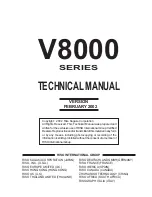
DIRECTOR Series Operator’s Guide
Document Revision: 0802
Page 102
Type 1 Copy Protection Scheme
Type 1 defect files are the most difficult to implement and work by
assigning the starting block and the number of blocks to corrupt. A
minimum of two Mode 1 blocks (2048 x 2 = 4096 bytes) must be corrupted.
So as to avoid corrupting undesired files you must know which files will
occupy which blocks on the final CD. It is therefore recommended that only
expert users implement the Type 1 scheme.
Example of a Type 1 defect file named “DEFECT1.DEF”:
[Defects]
AddDefectiveBlocks=DefectStart#4,DefectLength#2
;
;========================================================================
;
Remarks marked by ";" must be deleted before this file can be used.
;========================================================================
;
; This means corrupted area start at physical block 4 and is 2 blocks
; long. You must use a minimum length of two blocks.
Type 2 Copy Protection Scheme
Type 2 defect files are the simplest to implement and work by defining the
specific file (target) to be corrupted. The target file must be longer than the
number of invalid blocks, can be located in any directory on the CD, and
should not otherwise be used by your application. When creating the disc
image using the
Image
tab include the target file to be corrupted (named
“DUMMY.BIN” in the example below) so that it will be recorded onto the
CD.
Example of a Type 2 defect file named “DEFECT2.DEF”:
[Defects]
MakeFileDefective=FileDefectOffset#0,FileDefectLength#4096,FileName#\dumm
y.bin
;
;========================================================================
;
Remarks marked by ";" must be deleted before this file can be used.
;========================================================================
;
; Offset = byte from beginning of file where corruption will begin,
; starts at next 2048 byte increment of file (i.e. 3212 is the same as
; 4096 and 5446 rounds up to 6144. Length = In bytes minimum of 4096


















